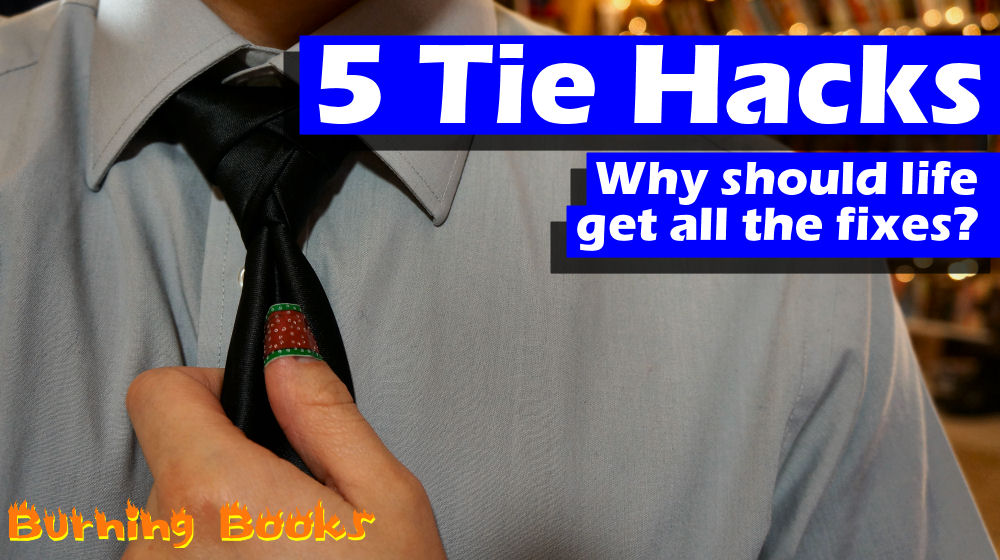Are Videogames Everywhere (not just in our beer)? | Hey Future Caleb [VIDEO]
Do people in the future even know what of their life has been influenced by video games? In the future, will video games and common design aesthetics overlap so much that the line between them is as hard to make out as the pixelated inspirations themselves? Is that previous sentence way to convoluted?
Transcript(ish)
Hey Future Caleb, in the year 2078, as you sit in front of your 38k resolution TV playing classic Atari games (because why play as a nondescript cube when you can play as an ultra hi-definition nondescript cube), so as you sit there pausing just long enough to look around your room, talking in the cubed pattern of your sofa, wondering if maybe you should take a break and read a book or grab something to drink from the refrigerator perhaps a soda…with pixelated rocketships on it, are you even able to identify a line separating the convergence of video games and everyday design? For context, now, in 2017, pixelation is a legitimate design choice, no longer the result of inferior hardware, and while it may not yet be removed enough from the 1970s-1990s source material to stand on its own, it’s getting there. I’m sure there are some people out there who know about pixelation, but don’t necessarily know video games. I imagine we aren’t too far off from forgetting the mosaic–a traditional design aesthetic and traditionally accepted design term–in favor of the pixelated–a contemporary design aesthetic and a widely misappropriated term–more on that later. Those making that transition from traditional to contemporary may not fully understand what pixelated even means. It’s just a new term, to them. A new style. The term’s origin, much like what it defines, may be a bit hard for them to make out.
Do people in the future even know what of their life has been influenced by video games? What seems absurd, or simply a contrived excuse for a Hey Future Caleb video, may not actually be that absurd. We’re all influenced in ways we don’t understand. The t-shirt was surely a wildly laughable idea in the past, but now it’s everywhere. And you, Future Caleb, you know the way everyone just goes to work doing everyday things dressed as their favorite fictional character? In my time, people were only allowed to do that on certain days of the year, in isolated compounds, away from the rest of society.
Part of me embraces the kind of legitimacy that can only come about when origins become drown out by mass adoption. The other part of me hates that something so integral to my childhood–that being 8 and 16 bit video games–is being repurposed by people who don’t know better. It’s not the first time this has happened. Just like some people say pixelated, when really they mean mosaic, I’ll bet you think I’m wearing a plaid shirt, but no. This is technically called tartan.
Pixelation is easy, though. It’s recognizable. I can easily trace the motif on this Dr. Pepper bottle to any space themed retro game. And slapping characters onto a product isn’t unique to video games. I’m wondering what the next evolution will be. Will console face buttons become a stand alone pattern? Will glitch screens go from postcard novelty to couch fabric? This isn’t too far off. Games have inspired design before. Ever heard of the checkerboard pattern? Of course. And of course you’ve heard of the pattern’s inspiration, the game of checkers….I’m not entirely sure I’ve got the chronology correct there, but the fact remains that the pattern and the game are linked.
Maybe all this sounds innocuous to you Future Caleb, but remember, in 2017 trees weren’t yet extinct. And science hadn’t yet figured out a way to arm every idiot person in the world with a gun by altering the human genome to allow forming a simple finger shape to fire actual bullets.
I know. We live like animals here in the past, so you’ll have to excuse me if my ideas seem pedestrian compared to your normal finger gun society.
But this video isn’t about those unknowing designers who simply slap an aesthetic onto any canvas. This video is about those all-knowing genius creators who lovingly imprint the video game ethos onto the only canvas that matters: beer.
So let’s drink in some inspiration and take some time to highlight a few present day breweries who have embraced the video game aesthetic.
8-Bit Pale Ale is brewed right here in my home state of Kansas, out of Manhattan KS. Tallgrass brewery ensured I’d be a lifelong fan with this ode to the retro, but thankfully the brewery’s other beers hold up swimmingly. Every single one is a delicious masterpiece.
Obviously this label takes inspiration from Pac-Man, which is a bit of a theme you’ll notice with these beers. The character is just so recognizable that even non-videogaming beer drinkers would be willing to take a sip. Though why would you even want to market to such a backwards demographic of people.
Jeff Gill, the founder of Tallgrass, tells me that the idea for a video game themed name and label came about via a friend who used to own a Game Guy video game store at the height of the 8-Bit gaming period. They were drinking, talking about their love of old games (especially Tecmo Super Bowl, Jeff says, which I will allow; it’s the last sports game I gave any shits about). Jeff’s friend mentioned the name 8-Bit Pale Ale. It rolled off the tongue. Considering the entire brewery’s love of old school NES games, the decision for the Tallgrass Pale Ale to be 8-Bit was a no brainer.
Up next is Hoptronix, a double IPA from New Holland Brewing out of Holland, Michigan. The Marketing Project Manager at the brewery tells me that though they had brewed double IPAs and had poured them at their pubs, they never distributed the style outside of the pubs. When they decided to distribute, they wanted the name and feel to reflect the fun and excitement of releasing something new on the shelf. The name came first. Then came the video game themed label.
The label itself obviously adopts the Space Invaders theme. To me, the non-abstraction of the design–keeping the design to the strict grid system of Space Invaders, sends a message that the beer respects restraint (after all, beer making is chemistry, and precision is important), but that the beer is also eager to change the world, in much the way Space Invaders did.
I also spoke a bit with the Brewery Production Manager, who turns out to be a big fan of video games and has even made suggestions to the marketing team for additional video game themed beers. Buy Hoptronix. Support the cause.
The third beer I have is a Blueberry lambic collaboration between Danish brewer Mikkeller and Munster, Indiana based brewery 3 Floyds. Mikkeller labels are unique in their own right, having been designed for years by Keith Shore, an artist whose work is defined by limited color palettes and flat figures. In fact, compared to the rest of Shore’s label, the design for the Blueberry lambic collaboration is quite atypical. The color palette is more diverse and the negative space more pronounced than the typically crowded feel of his labels.
I reached out to the artist for some comments in his inspiration. Shore tells me that one of the brewers at 3 Floyds loves Pa-Man. Based on a conversation about the infamous kill screen the Blueberry lambic label was born. This kill screen is the final Pac-Man board, level 256, that glitches out do to the game simply not being programmed to expect players to reach such a point in the game. I love the label. It’s obviously Pac-Man inspired–even to the layman–, but the kill screen inspiration is evident only to those really into video game culture.
Lastly, an honorable mention and the beer I am currently drinking. Funky Gold Amarillo from Prairie Artisan Ales out of Tulsa Oklahoma seems to take inspiration from the game Crazy Taxi. Prairie Artisan Ales labels often contain short comic strips, little glimpses of narrative, which is an idea I fully support. This particular label follows the journey of a frumpy gamer who finds an arcade in the back of a taxi cab, falls into a Crazy Cabbie game cabinet in said arcade, and upon hailing a cab in the game, seems to start the scenario over again, thus revealing an infinite loop.
It’s possible that this label and the label from Prairie’s Funky Gold Mosaic are meant to compliment each other. Both show the role of screens in our daily lives, one for fun and one for study….Though it does seem this person could be reading an article about a video game, judging by the spacecraft look of this image.
So Future Caleb, I hope you’ve enjoyed this reminder of the past, this peek into the origin of your future world where all walls are pixelated, all food nutritional information is calculated not in calories but in hit points, and all pets are expected to fight alongside you in battle. You’re living in a glorious world with no separation between video games and reality, so with that in mind Future Caleb, I say to you, don’t jump into that chasm…are you fucking crazy? You’ll did.
Current viewers, let me know what video game you’d like to see re-purposed for everyday design. And if you know of any other video game themed beers, let me know in the comments below.
Please like, subscribe, click the bell, all of this helps a small channel like this one. I would love to bring my average video views up to 100 by the end of the year. You can help. Share this video with your gaming friends, your beer drinking friends, and your boring friends.
And to you Future Caleb, say hi to your grand kids for me.
Mentioned Breweries
Research/Sources/Credits
- Pixelated sofa: http://boilr.net/2008/04/26/low-resolution-furniture/
- Glitch postcards: https://www.kickstarter.com/projects/2146199819/nintendo-entertainment-system-famicom-a-visual-com
- Glitches: http://no-carrier.com/index.php?/glitchnes/
- Mosaic dove: http://blog.granitetransformations.com/todd-michael-creates-modern-day-mosaic-designs-using-old-world-artistry/
- 8-Bit Doves: http://freapp.com/apps/ios/891716357/
- Tecmo Super Bowl: By Source, Fair use, https://en.wikipedia.org/w/index.php?curid=7127043
Music Credits
- 8bit Dungeon Level Kevin MacLeod (incompetech.com), Licensed under Creative Commons: By Attribution 3.0 License, http://creativecommons.org/licenses/by/3.0/
- Reunited Kevin MacLeod (incompetech.com), Licensed under Creative Commons: By Attribution 3.0 License, http://creativecommons.org/licenses/by/3.0/


